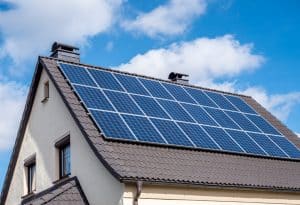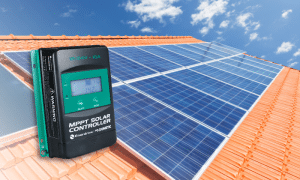Australia has seen a significant surge in interest and adoption of solar energy in recent years. The growing enthusiasm can be attributed to several factors, such as environmental awareness, rising energy costs, and government initiatives promoting renewable energy sources.
As a result, rooftop solar installations have become a common sight across urban and rural landscapes. While the benefits of solar energy are evident, the key to getting the most out of it is tailoring a solar system that meets your specific energy needs.
For those with small power bills, it’s necessary to understand your current energy usage and future needs. Let us guide you in determining the ideal solar system size suited to your small power bill.
Your power consumption
The initial step in determining the right solar system size aligned to your small power bill is understanding your power consumption. You probably have an idea at this point, but you will need to go into more detail to ensure a precise match between solar system size and your usage requirements.
The best way to understand your power consumption is to look into your past energy bills. Analyse historical data to identify trends, peak usage periods, and seasonal variations. Doing so will provide you with insights into your average energy consumption that puts you ahead in making the right decision regarding the size of your solar system.
When you have the data you need, quantify your daily and monthly energy consumption. Calculate your average daily energy usage by dividing the total monthly consumption by the number of days in that month. This figure will determine the minimum solar system size necessary to meet your daily needs.
Finally, anticipate future changes in energy consumption to get a solar system that can grow with your changing needs. Start with foreseeable lifestyle changes that impact energy usage, such as adding new appliances, electric vehicles, etc.
You must also stay informed about emerging technologies affecting energy efficiency. Consider how future advancements could impact your energy needs.
To further assist you in navigating the complexities of solar system sizing, consider seeking tailored advice from professionals through Energy Matters. They can provide FREE solar quotes based on your specific needs, helping you make informed decisions without the pressure of commitment.
Common solar system sizes and their benefits
Today, a 6.6 kW solar system is the most common size installed on homes in Australia today. It allows for greater capacity and battery storage. With the costs of solar systems reducing, getting a more extensive system is more affordable.
A 6.6 kW solar system is perfect for medium or large families and there are plenty of brands in the market that you can choose from. An average household consumer consumes approximately 20 kW/h per day. A 6 kW solar system can generate 17 to 27 kW/h of electricity, which results in more significant savings.
Regarding the inverter size, a 5 kW is very common because it leaves room by 133%, which matches the 6.6 kW solar power system.
Did you know that the average size of the system installed in 2023 was 9.3kW?! This shows that more and more Aussies are choosing larger systems to move towards energy independence.
With various reputable brands available in the market, finding the right fit for your needs is easier than ever. If you’re curious about the potential benefits and costs specific to your situation, getting FREE solar quotes from Energy Matters could provide valuable insights without any obligation.
What’s the right solar system size for those with small energy bills?
Will a 6.6 kW solar system still be the best choice for those with smaller energy bills? Whether you’re living alone or there is barely anybody home during the day, but you want to make the most out of your solar system, a 6.6 kW is still a safe option. It also brings flexibility should you have expansion plans in the future, whether in lifestyle or structural.
Adding a solar battery also makes the investment even more worthwhile, as you can store solar energy and use it or send the extra power back to the grid in exchange for a rebate.
Of course, there is always the option to get a smaller solar system, which is 3 kW, 4 kW, or 5 kW. However, times have changed. The Alternative Technology Association shows that having a bigger solar system—even if you don’t use much electricity—is more practical based on statistics.
In the second quarter of 2023, the Australian Energy Council’s (AEC) analysis of the Clean Energy Regulator’s (CER) latest Quarterly Carbon Market Report states that the average size of rooftop PV systems was 9.3 kW in Australia.
A few years back, solar installers would advise their residential customers to install just enough solar panels to meet their average energy demand. Hence, it resulted in most homes having 6.6 kW. However, as electricity prices increase, the number of homeowners are considering the benefits of going electric increases. This leads to a new shift.
Around 90 per cent of homeowners want to install a bigger solar system because they switch from gas to electric. Some are also planning on adding electric vehicles, which means their energy use will double. To compensate for this, they need a bigger system.
So, even with a small power bill, it’s safe to think ahead to determine the right solar system size for your home.
Energy Matters has over 18 years of experience in the solar industry and has helped over 40,000 Australian households in their journey to energy independence.
Complete our quick Solar Quote Quiz to receive up to 3 FREE solar quotes from trusted local installers – it’ll only take you a few minutes and is completely obligation-free.












































